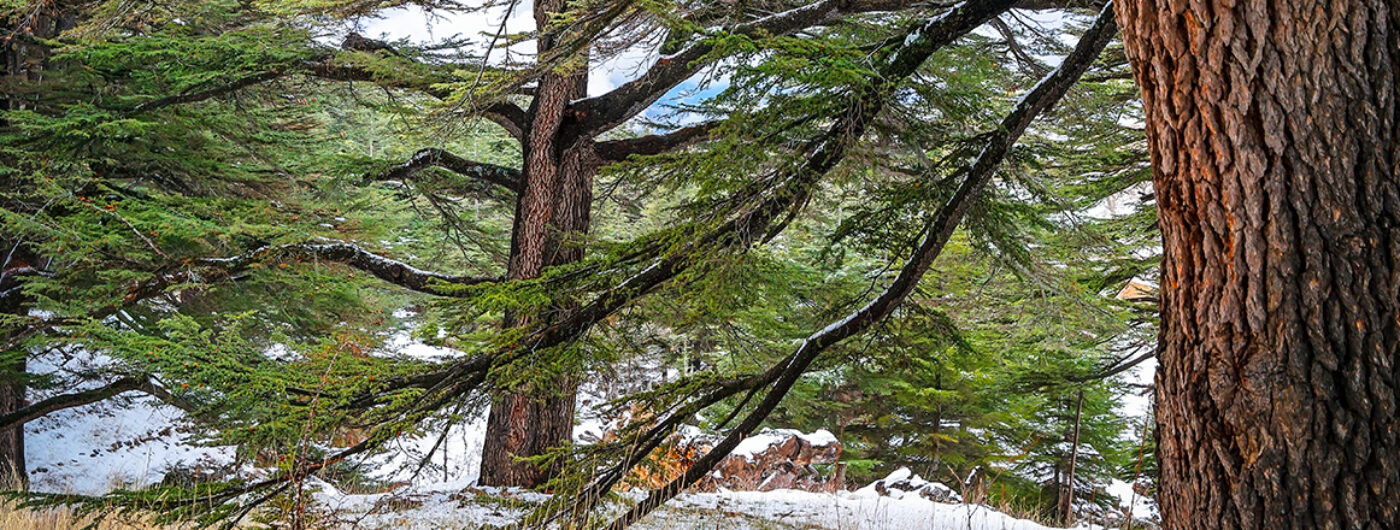
International Forest Day: UfM supports scaling up forest and landscape restoration in the Mediterranean in the face of climate change
- In the Mediterranean region, there are over 80 million hectares of degraded land. More than 400,000 hectares of forests are burned each year and at least 16% of animal and plant species in Mediterranean forests are at risk of extinction due to environmental threats such as forest fires driven by climate change.
- Effective planning, implementation, and monitoring of large-scale programmes such as Forest Preservation and Landscape Restoration (FLR) are critical to achieving climate and restoration goals in the Mediterranean region.
- The Union for the Mediterranean (UfM) and the Food Agriculture Organisation of the United Nations (FAO) support a project to restore biodiversity in the Mediterranean through forest and landscape restoration, especially in Lebanon and Morocco.
Forests have a crucial importance to mitigate climate change in the Euro-Mediterranean region. With a view to support the implementation of forest and landscape restoration practices in the region, UfM and FAO are promoting the project “Scaling up forest and landscape restoration to restore biodiversity and promote joint mitigation and adaptation approaches in the Mediterranean”.
The initiative seeks to achieve a balance between restoring ecosystem services related to wildlife habitats, biodiversity, water regulation, carbon storage, and supporting the productive functions of land for agriculture and other related uses. Its approach proactively involves all land users while applying participatory decision-making processes.
With a budget of €1,850.000 over a 4-year period, the project is the Mediterranean component of a larger global project called “The Paris Agreement in Action: upscaling forest and landscape restoration to achieve nationally determined contributions’ (2018-2022). The endorsement by the Union for the Mediterranean (UfM) has allowed some Mediterranean countries to benefit from specialised technical assistance on tackling land degradation and using climate financing instruments.
Lebanon: Grazing and rangeland management in Tannourine and Manara communities.
The Ministry of Agriculture together with the FAO, have established a rangeland management plan through pilot studies in the communities of Tannourine and Manara. These regions have been used for centuries for grazing and agricultural purposes. Field visits aimed at capturing the variability of the sites in terms of biodiversity and productive capacity have been undertaken in Tannourine. Seven rangeland management units have been identified comprising a total land area of 1760 hectares and detailed assessment has been analysed to determine the capacity of land to accommodate a specific number of grazing animals beyond which significant degradation or loss of biodiversity can occur. Relevant social and economic data have also been collected to catalyse the development of a holistic and solid rangeland management plan.
Two technical tools have been developed for the Lebanese Ministry of Agriculture and the Ministry of Environment for the purposes of supporting the inclusion of forest restoration into the Climate Nationally determined contributions (NDCs); and estimating greenhouse gases (GHG) capture. These tools will greatly assist ministries to record, monitor, and report on the project. It is also envisioned that these tools will empower the building of functional databases to monitor and track progress notably the advancement of the “40 million Tree Programme” and the Land Degradation Neutrality targets.
Morocco: A new participatory management plan for the Maâmora Forest and restoration activities in the Ifrane Model Forest.
The Maâmora Forest is the largest cork oak forest in the world, located on the Moroccan Atlantic plain between Rabat and Kenitra. Since 1918, the Department of Water and Forests of Morocco has put impressive efforts into the conservation and development of forestry in the region. However, despite these concerted efforts, an approximate area equalling 300,000 hectares of cork oak trees has been transformed into a partially degraded forest as a result of climate change and unsustainable human activities. The systematic collection of acorns for human consumption, overgrazing, and wood harvesting has led to severe aridity which has exacerbated the overall demise of the forested land area.
The Department of Forests and Water of Morocco with the support of the FAO developed a management plan to include participatory capacity building approaches and a socio-economic development plan, so that the local population can play a central role in the restoration and conservation efforts to rehabilitate the Maâmora Forest. The management plan includes the establishment of innovative contracts with local communities to guarantee compensation for the temporary loss of grazing due to the implementation of restoration interventions. This has led to the development of new value chains such as truffle harvesting to provide alternative economic revenue streams for the local communities dependent on the forests.
Degraded areas for restoration have been identified through a comprehensive assessment of existing restoration best practices and a socio-economic study to assess the current impact of local populations on key forest resources. This management plan will consist of a pilot test on 3 423 hectares of land designated for restoration purposes with the involvement of local actors.



